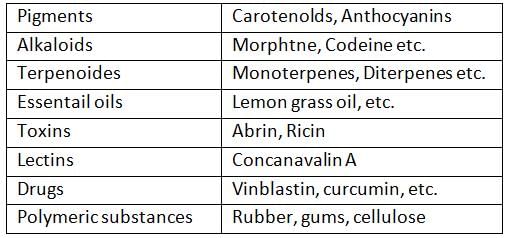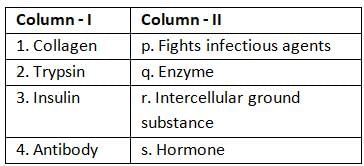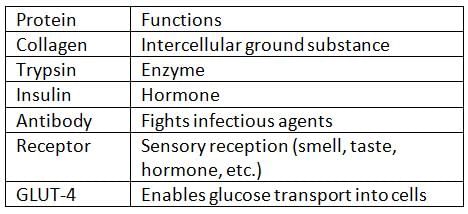SRMJEEE Biology Mock Test - 2 - JEE MCQ
30 Questions MCQ Test - SRMJEEE Biology Mock Test - 2
What is the significance of the nodes of Ranvier in a myelinated nerve fiber?
Read the following 4-statements (i – iv) and accordingly mark the option that has both correct statements.
(i) Cardiac fibres are branched with one or more nuclei.
(ii) Smoot h m uscles are unbranched and cylindrical.
(iii) Striated muscles can be branched or unbranched.
(iv) Involuntary muscles are non-striated.
(i) Cardiac fibres are branched with one or more nuclei.
(ii) Smoot h m uscles are unbranched and cylindrical.
(iii) Striated muscles can be branched or unbranched.
(iv) Involuntary muscles are non-striated.
Increasing the secretion of insulin would have which of the following effects?
Match the following types of leukocytes with their primary functions.
Assertion (A): In some plants, roots are modified to perform functions other than absorption and conduction of water and minerals.
Reason (R): Modification of roots includes changes in shape and structure to store food, provide support, and help in respiration.
Given below is the pathway (2-scheme) of light reaction. Identify the blanks indicated by A, B, C and D.
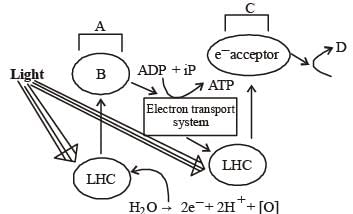
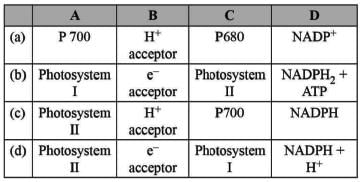
How many mitotic divisions are needed for a single cell to make 128 cells?
Which of the following statements correctly describes the behavior of the chromosome in anaphase I of meiosis?
Consider th following statements A, B, C & D with certain blanks.
Find the option which correctly fill up these blanks
A. The ootheca of cockroach is about __(i)____ long.
B. The development of P americana is ___(ii)___, meaning there is development through ___(iii)____ stage.
C. In the head region of cockroach, the brain is represented by ___(iv)___ ganglion, which supplies nerves to antennae and ____(v)___.
D. The respiratory system of cockroach consists of a network of trachea, that opens through ____(vi)____ of small holes called spiracles present on the ____(vii)____ side of the body.
A somatic cell th at has just completed the S phase of its cell cycle, as compared to gamete of the same species, has :
First sound of heart beat is lower frequency and longer duration. It develops during
What is the primary function of the autonomic nervous system?
Which one of the following options gives one correct example each of convergent evolution and divergent evolution?
| Convergent evolution | Divergent evolution |
| 1. Eyes of Octopus and mammals | Bones of forelimbs of vertebrates |
| 2. Thorns of Bougainvillea and tendrils of Cucurbita | Wings of butterflies and birds |
| 3. Bones of forelimbs of vertebrates | Wings of butterfly and birds |
| 4. Thorns of Bougainvillea and tendrils of Cucurbita | Eyes of Octopus and mammals |
Which one of the following is the correct matching of three items and their grouping category?
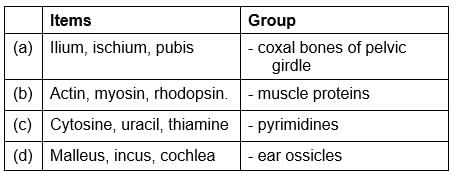
A dithecous anther consists of ____(i)_______microsporangia, _____(ii)_______ in each lobe.
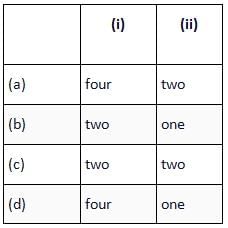
Which of the following is a characteristic feature of telophase?
Assertion (A): Osteoporosis results in increased bone density.
Reason (R): Osteoporosis is characterized by the loss of bone mass and weakening of bone structure.
Deposition of uric acid crystals with in the synovial joint causes:
What is the primary function of hormones in the human body?
Which gland is often called the "master endocrine gland"?
Assertion (A): In monocotyledonous plants, the primary root is short-lived and is replaced by a large number of roots originating from the base of the stem.
Reason (R): Monocotyledonous plants have a fibrous root system that helps in providing a more extensive network for water and nutrient absorption.
Figure shows blood circulation in humans with labels A to D. Select the option which gives correct identification of label and functions of the part:
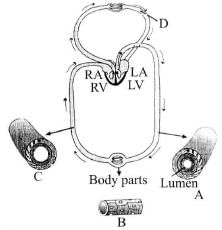
Which neurons carry impulses from the CNS to the effectors?
What is the primary purpose of breaking open a cell in the process of DNA extraction?



